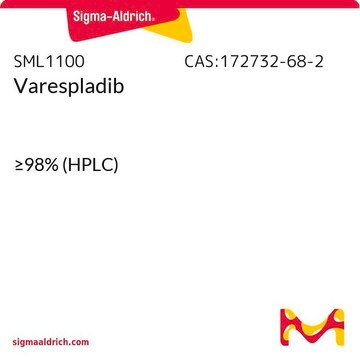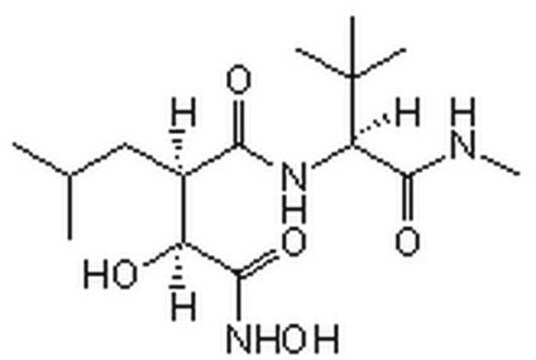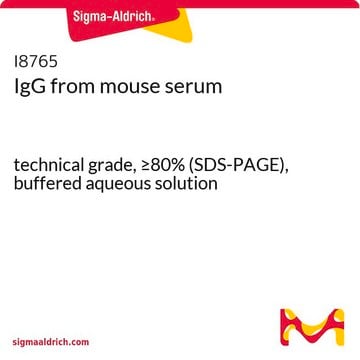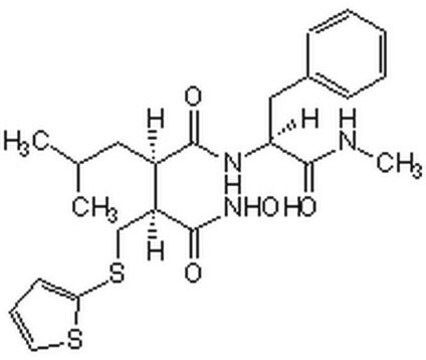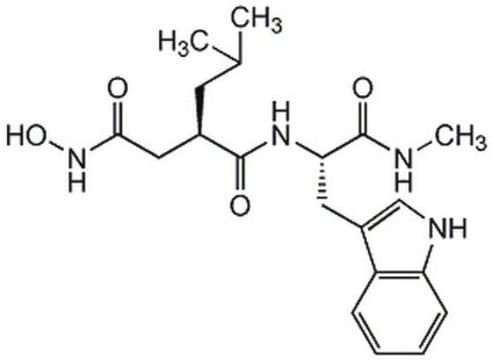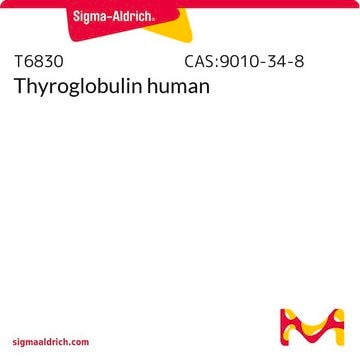M2699
Marimastat
≥98% (HPLC), solid, MMP inhibitor
Synonym(s):
BB2516, (2S,3R)-N4-[(1S)-2,2-Dimethyl-1-[(methylamino)carbonyl] propyl]-N1,2-dihydroxy-3-(2-methylpropyl)butanediamide
About This Item
Recommended Products
product name
Marimastat, ≥98% (HPLC)
Quality Level
Assay
≥98% (HPLC)
form
solid
solubility
DMSO: ≥20 mg/mL
shipped in
wet ice
storage temp.
−20°C
SMILES string
CNC(=O)[C@@H](NC(=O)[C@H](CC(C)C)[C@H](O)C(=O)NO)C(C)(C)C
InChI
1S/C15H29N3O5/c1-8(2)7-9(10(19)13(21)18-23)12(20)17-11(14(22)16-6)15(3,4)5/h8-11,19,23H,7H2,1-6H3,(H,16,22)(H,17,20)(H,18,21)/t9-,10+,11-/m1/s1
InChI key
OCSMOTCMPXTDND-OUAUKWLOSA-N
Gene Information
Application
- metalloproteinase 2/9 (MMP2/9), to study its effects on exercise-mediated interleukin-6 (IL-6) release in mice
- metalloproteinase, to determine protease activity in Pseudomonas aeruginosa cultures
- metalloproteinase 10 (MMP10), to study its effect on monoclonal antibody H3 binding to MMP10
Biochem/physiol Actions
Storage Class Code
11 - Combustible Solids
WGK
WGK 3
Flash Point(F)
Not applicable
Flash Point(C)
Not applicable
Certificates of Analysis (COA)
Search for Certificates of Analysis (COA) by entering the products Lot/Batch Number. Lot and Batch Numbers can be found on a product’s label following the words ‘Lot’ or ‘Batch’.
Already Own This Product?
Find documentation for the products that you have recently purchased in the Document Library.
Customers Also Viewed
Our team of scientists has experience in all areas of research including Life Science, Material Science, Chemical Synthesis, Chromatography, Analytical and many others.
Contact Technical Service
